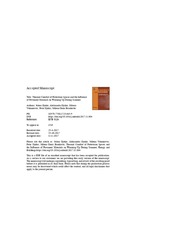| dc.creator | Đekić, Jelena | |
| dc.creator | Đukić, Aleksandra | |
| dc.creator | Vukmirović, Milena | |
| dc.creator | Đekić, Petar | |
| dc.creator | Dinić-Branković, Milena | |
| dc.date.accessioned | 2019-11-03T16:43:08Z | |
| dc.date.available | 2019-11-06 | |
| dc.date.available | 2019-11-06 | |
| dc.date.issued | 2018 | |
| dc.identifier.issn | 0378-7788 | |
| dc.identifier.uri | https://raf.arh.bg.ac.rs/handle/123456789/402 | |
| dc.description.abstract | Public space is very valuable for a variety of community activities. Open public space comfort is one of the main indicators that provide its enjoyability, attractiveness and liveability. Having in mind that the climate conditions and the implemented urban design are influential in providing pedestrian thermal comfort, this study will focus on physical attributes of used pavement materials and their impact when they are exposed to high summer temperatures as well as on thermal comfort of the users of open public spaces. The methods that were used in the analysis include the method of direct surveying of inhabitants, the method of observation and the method of measuring the characteristics of different materials used for pavement in the pedestrian zone. The measuring of the current surface temperature of different paving materials used for pedestrian zone was performed during the summer season (July, August, and September) of 2015 in the central city zone of the city of Nis, with the goal of determining the maximum heating up of horizontal surfaces, i.e. pavements. The survey was done in July 2015 in the main square in. Nis. The measuring determined that in the same conditions, various materials yield various maximum temperatures. It was also concluded that the type of material, colour, roughness and shading of an area affect the heating up of pedestrian surfaces. The purpose of this paper is to highlight the complexity of the relationship between microclimate thermal comfort in public open spaces and the measured temperature of the pavement surface, and to emphasize the importance of this relationship in the context of contemporary urban design. The paper presents the case study of pedestrian spaces in the central area of the City of Nis in Serbia. | en |
| dc.publisher | Elsevier Ltd | |
| dc.relation | info:eu-repo/grantAgreement/MESTD/Basic Research (BR or ON)/177009/RS// | |
| dc.relation | info:eu-repo/grantAgreement/MESTD/Technological Development (TD or TR)/36035/RS// | |
| dc.rights | embargoedAccess | |
| dc.rights.uri | https://creativecommons.org/licenses/by-nc-nd/4.0/ | |
| dc.source | Energy and buildings | |
| dc.subject | City of Niš | en |
| dc.subject | Pavement | en |
| dc.subject | Pedestrian spaces | en |
| dc.subject | Serbia | en |
| dc.subject | Surface temperatures | en |
| dc.subject | Thermal comfort | en |
| dc.title | Thermal comfort of pedestrian spaces and the influence of pavement materials on warming up during summer | en |
| dc.type | article | |
| dc.rights.license | BY-NC-ND | |
| dcterms.abstract | Динић-Бранковић, Милена; Вукмировић, Милена; Ђекић, Петар; Ђекић, Јелена; Ђукић, Aлександра; | |
| dc.citation.volume | 159 | |
| dc.citation.spage | 474 | |
| dc.citation.epage | 485 | |
| dc.citation.rank | aM21 | |
| dc.description.other | This is the peer-reviewed manuscript of the article: Djekic, Jelena, Aleksandra Djukic, Milena Vukmirovic, Petar Djekic, and Milena Dinic Brankovic. 2018. ‘Thermal Comfort of Pedestrian Spaces and the Influence of Pavement Materials on Warming up during Summer’. Energy and Buildings 159 (January): 474–85. [https://doi.org/10.1016/j.enbuild.2017.11.004] | |
| dc.identifier.wos | 000423008200037 | |
| dc.identifier.doi | 10.1016/j.enbuild.2017.11.004 | |
| dc.identifier.scopus | 2-s2.0-85034785935 | |
| dc.identifier.fulltext | https://raf.arh.bg.ac.rs/bitstream/id/774/djekic2018.pdf | |
| dc.type.version | acceptedVersion | |

